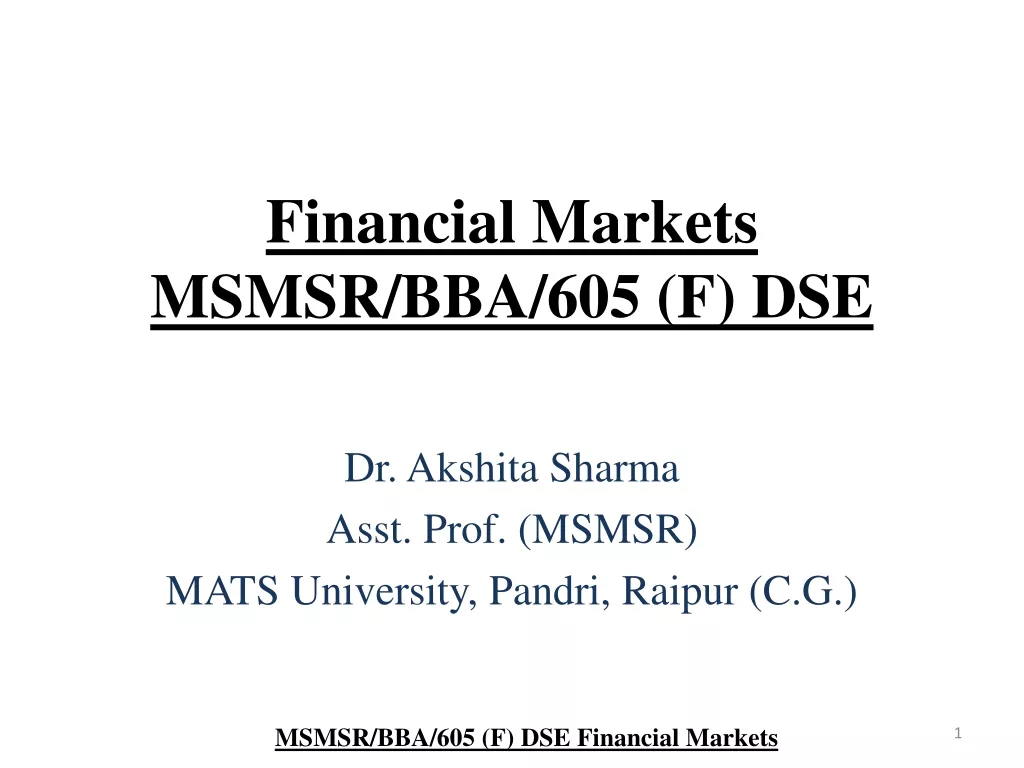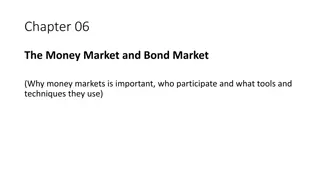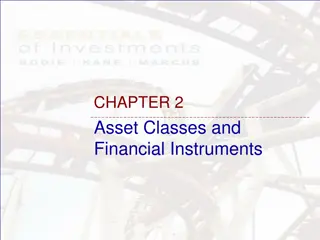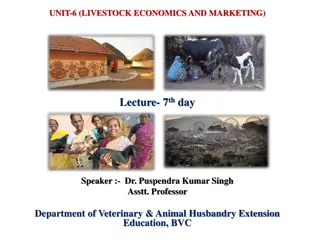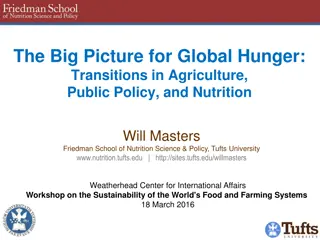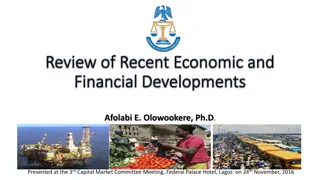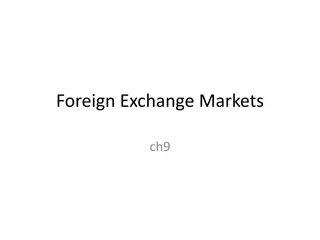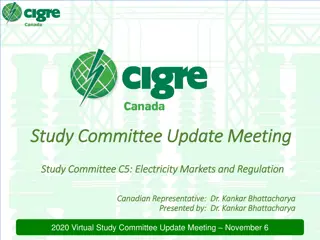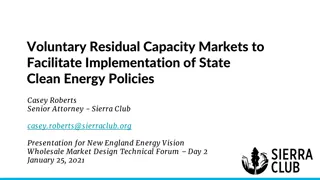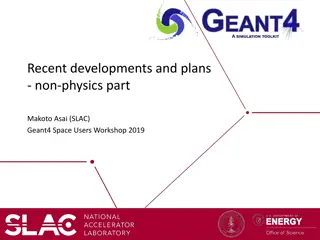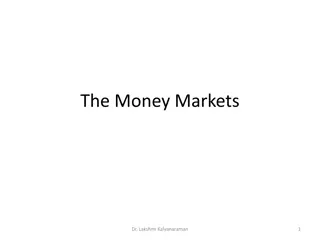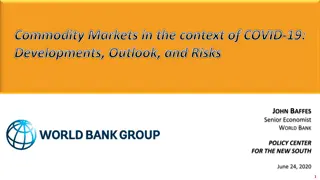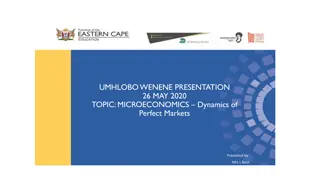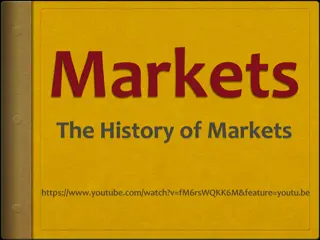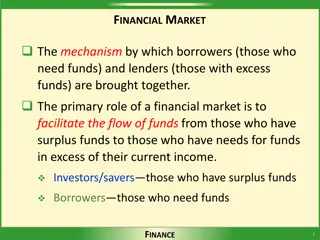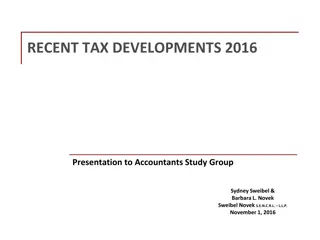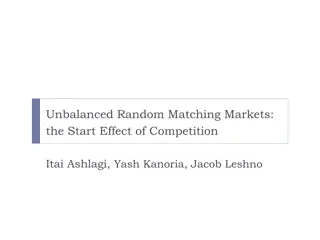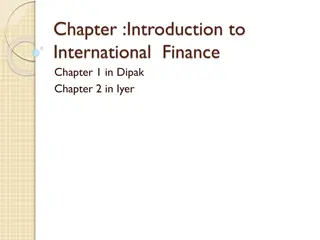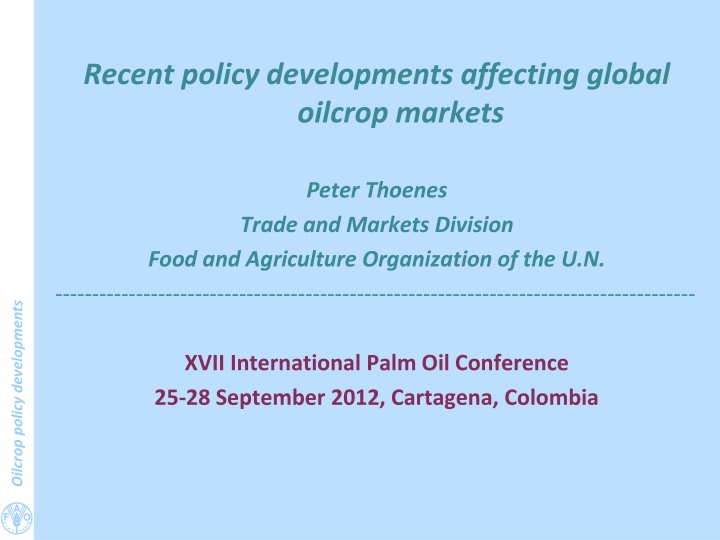
Recent policy developments affecting global oilcrop markets
This article discusses recent policy developments affecting global oilcrop markets, including food security measures, sector development policies, and other related domains. It explores the causes of sudden price surges in the past and reviews various policy interventions aimed at ensuring domestic supplies and controlling food import bills. The analysis highlights the impact of different policy measures on farmers, processors, and overall market dynamics.
Download Presentation

Please find below an Image/Link to download the presentation.
The content on the website is provided AS IS for your information and personal use only. It may not be sold, licensed, or shared on other websites without obtaining consent from the author. If you encounter any issues during the download, it is possible that the publisher has removed the file from their server.
You are allowed to download the files provided on this website for personal or commercial use, subject to the condition that they are used lawfully. All files are the property of their respective owners.
The content on the website is provided AS IS for your information and personal use only. It may not be sold, licensed, or shared on other websites without obtaining consent from the author.
E N D
Presentation Transcript
Recent policy developments affecting global oilcrop markets Peter Thoenes Trade and Markets Division Food and Agriculture Organization of the U.N. --------------------------------------------------------------------------------------- Oilcrop policy developments XVII International Palm Oil Conference 25-28 September 2012, Cartagena, Colombia
Overview 1. Overall setting 2. Policy review a) food security measures b) sector development policies c) other policy domains 3. Conclusions Oilcrop policy developments 2
1. Overall market setting Oilcrop policy developments 3
causes of the sudden, general 2007/08 price surge: over the 1995-2005 decade, global markets had become increasingly vulnerable concurrence of factors in 2007/08 Oilcrop policy developments 4
1. Policy review a) food security measures b) sector development policies c) other policy domains Oilcrop policy developments 5
Policy review a) food security measures i. domestic market measures ii. border measures ad-hoc measures concentrated in poor, import dependant developing countries main intervention areas: local production, domestic markets, border measures objectives secure domestic supplies control food import bills maintain production incentives Oilcrop policy developments 6
i. domestic market measures measures: subsidized food distribution, tax rebates, other (mostly temp.) social safety net schemes food price controls, negotiated prices, price caps (mostly temp.) other market controls, restrictions on private stocks state reserves for public market intervention (China) incidence: o 9 developing countries o 6 x food distribution, zero x social safety net schemes, 6 x price/market control o public food reserves ( more lasting effect) only in one country issues: o reduced farmers incentives to raise output o harmful to processors o demanding to implement and costly o wasteful if not well targeted o perpetuation pressure Oilcrop policy developments 7
ii. border measures IMPORT POLICIES measures: reduction/removal of tariffs reduction in non-tariff measures STE trade (temporary) Gov-to-Gov trade (one-time) incidence: o 26 countries, of which only 12 LIFDCs o quickest and least costly means to address dom. food security problems issues: o governments taken unprepared o increased international competition for limited global supplies possibly fuelling further increases in international prices o harming dom. producers - aggravating supply problems in the longer term o negative economic welfare effect Oilcrop policy developments 8
EXPORT POLICIES measures: export taxation - variable/sliding schemes (specifically for domestic price stabilization) export taxation - fix rates (but still temp) quantitative exp restrictions, i.e. quota/bans ( most disruptive form!) incidence: o 11 countries incl. only 3 major exporters (Argentina, Indonesia. Malaysia) o export taxation: 5 cases, export restrictions: 8 cases issues: o at domestic level modest impact on dom. supply situation dilution in objectives varying economic welfare effects Oilcrop policy developments 9
o at global level reduces global export supplies possibly further pushing up world market prices! hurts importing trade partners -> inviting retaliation -> fueling protectionist policies unpredictability -> raises uncertainty, undermines trust in the trading system actual market impact: small if any repercussions in case of oilcrop market -- as opposed to cereal markets ! food security measures overall findings: o wide range of measures used to calm domestic markets o significant number of countries - but limited LIFDC participation o most used: import measures (quickest , cheapest), followed by dom. market interventions; few export restrictions o interventions almost exclusively of temporary nature (exemption: China s strategic food reserves) Oilcrop policy developments 10
o good news: correction of past neglect of food sector; attention to immediate consumer needs in developing countires o bad news: mostly ad-hoc/temp. interventions: not contributing to lasting protection of consumers and permanent improvement of dom. supply situation only addressing specific markets; no new broad-based, social safety net schemes measures used: not always effective; high economic costs; negative repercussions on other elements of the commodity chain, on trade partners & the global markets regulation of national markets: rising doubts reg. appropriate level and duration of government interventions Oilcrop policy developments o key questions: o how to achieve and maintain reasonably stable prices for - remunerative for growers and equitable to consumers conflicting objectives! o what is needed to make international markets function better in crisis? 11
Policy review -contd b) sector development policies i. producer support ii. general sector development support iii. processing sector support Oilcrop policy developments 12
i. measures: production support , income protection programmes and related measures: o farmer price support (procurement), income support, production loan schemes: o crop insurance, revenue insurance, risk management schemes o other farmer oriented measures (investment, taxation, o input supply schemes o supporting trade measures (in exporting countries) emergency assistance (temp.): natural calamities and other hardship situations incidence: o production policies in place in 16 countries o 11 countries afforded emergency measures o among developed countries and major producers: no major changes o small, developing nations: continued limited incidence of measures o crop/revenue insurance schemes & risk management tools: few countries o partly flanked by trade policies o overall, no significant improvement in the capacity of poor, vulnerable nations to react to domestic supply shortfalls ill-equipped to respond to food crises producer support Oilcrop policy developments 13
ii. general sector support main objectives developing/improving the country s export potential (building on comparative advantages) allowing import substitution, reduce import dependence measures: support to producer or processors crop improvement programmes sector master plans supply regulation consolidation of farms attracting investors demand promotion export promotion & export market studies infrastructure development support to market diversification (domestic value addition; specialty oils , other niche markets) protection from competing imports; support to import substitution Oilcrop policy developments 14
incidence: o wide range of commodity-specific measures, implemented in numerous countries, with different levels of public funding and varying degrees of impact o several new initiatives reflecting continued efforts to gain access to export markets market diversification efforts renewed concerns about national food security and self-sufficiency recourse to public market-regulation and border measures o actual production impact: limited o main hurdles weak price transmission from world to regional/local level lack of lasting, concerted policy efforts addressing the commodity chain as a whole no collaboration with the private sector o other challenges: temporary welfare losses via inefficient resource allocation threat from competitively priced imports; temptation to resort to import restrictions Oilcrop policy developments 15
iii. processing sector support objective: enhancing domestic value addition of concern to governments in many producing/consuming countries importing and exporting countries pursuing diametrically opposed objectives instrument of choice: border measures measures: differential export taxes DET (or similar) differential import duties DID (or similar) incidence: o big interests are at stake, notably in countries that invested heavily in their processing industries o South Asia: India (specialized in refining imported oil) and Malaysia (specialized in exportation of refined oils) both struggling with low capacity utilization rates - - while Indonesia (traditionally exporting unprocessed oil) recently invested heavily in domestic refining Indonesia s DET revision (2011): strong repercussions for producers, refiners and trade at regional & global level Oilcrop policy developments 16
Policy review (contd) c. other policy domains i. renewable energy policies ii. financial market regulation iii. environmental policies iv. GMO regulations v. health related measures vi. Oilcrop policy developments 17
other policy domains i. renewable energy policies measures: master plans and regulatory frameworks for BF production, distribution, sales direct support measures to stimulate BF production/consumption (subsidies, tax breaks, etc.) mandatory consumption targets or blending requirements (gradually replacing direct support measures) government-set BF retail price minimum GHG emission reduction requirements (feedstock-specific default values) incentives for non-food feedstock and 2nd generation biofuels supporting trade measures DET to stimulate BF exportation (at expense of dom. consumption?) import restrictions or import facilitation measures Oilcrop policy developments 18
incidence: o started in early 2000s, initially mostly developed countries o developing nations: slower and more prudent o 23 countries: direct production/consumption incentives o 24 countries: mandatory consumption or blending targets emerging concerns: o over-ambitious targets (regulatory challenges; insufficient production) o doubts reg. environmental credentials of BFs: GHG reduction rates questioned; and criticism that rules were not leading to tangible improvements at source o virtually no advance in 2nd gen. BFs (limited incentives; regulatory uncertainty) o rising frictions between countries: different levels of support tend to affect trade different dom. regulations tend to affect trade possible trade discrimination o rising use of veg.oils as BD feedstock -> reduces supplies for human consumption -> contributing to higher internat. prices -> food crisis Oilcrop policy developments 19
policy responses: phasing-out of direct subsidies revisiting mandatory consumption targets: lowered or delayed introduction mandatory certification of sustainable production, sourcing and use of feedstock (EU) 2nd generation BFs: new promotion efforts remaining challenges: o frequent adjustments/corrections -> creating uncertainty o idle BF production capacity o EU s sustainable certification requirements affecting trade o trade disputes: 3 anti-dumping actions Oilcrop policy developments further policy adjustments: increased attention to negatively affected BF industries considering temporary suspension of mandatory consumption/blending requirements possible inclusion of ILUC-factors in GHG emission requirements (EU) 21
private sector/civil society initiatives: investment in non-food agric. feedstock, waste veg.oil, etc. independent research on environmental credentials of BF feedstock (GHG emission values, ILUC impact) formulation of voluntary standards and certification schemes sustainable BF aviation-fuel BD blends RSPO/RTRS: possible incorporation of GHG emission values into standards automotive, aviation, other industries: BD blending tests, new BD uses feedstock suppliers: adjusting to certification requirements BF producers: sustainability certification: mixed reaction calls for protection from foreign competition Oilcrop policy developments 22
other policy domains -contd ii. financial market regulation excessive speculation in agricultural futures and options market identified as one of the factors contributing to the 2007/08 food crisis -> rules governing commodity derivatives revisited to prevent excessive speculation reduce volatility in food prices USA (2011, 2012 Dodd-Frank Act) EU (2012 EMIR-European Markets Infrastructure Regulation) China (2010), India (2012, temp.) Oilcrop policy developments 23
other policy domains -contd iii. environmental policies environmental policies generally gaining weight increased geographical concentration in production -> concerns regarding environmental sustainability notably with regard to soybean and oil palm policy measures: production expansion controls/restrictions (Indonesia, 2011) support and incentives for sustainable production expansion (Brazil, Indonesia, Malaysia) formulation of national certification schemes (Indonesia, Thailand, Malaysia) support to smallholder certification (oil palm) EU: mandatory certification of biofuel feedstock Oilcrop policy developments 24
incidence: o few countries but includes heavyweights with environmentally fragile zones o proceeding slowly, stepwise so as not to harm sector development o limited immediate effects (e.g. Indonesia moratorium) o government-sponsored certification systems possibly competing with private sector schemes o uncertainty about future policy action increasingly affecting investments and trade Oilcrop policy developments 25
Private sector/industry-led initiatives: palm/soy sectors under tight scrutiny reg. sustainability of production rising pressure for certification and traceability throughout the supply chain voluntary actions are geared towards preventing demand slowdown/securing continued demand expansion improving companies green image securing future market share voluntary initiatives: global multi-stakeholder initiatives: RSPO c-o-p, standards, certification, controls & sanctions system; alternative trade options: full segregation method , mass balance calculation, book & claim mechanism RTRS c-o-p, standards, certification , trading tools producer initiatives (national associations, individual companies): tropical forest moratorium, Brazil (6th year) sustainable soy production and certification, Brazil support to national certification schemes, Indonesia/Malaysia national adaptation of RTRS, China Oilcrop policy developments 26
traders: commitment to offer certified products setting up fully separated supply chains for certified products assisting producers to comply with certification requirements processors: commitment to use certified products search for new non-food applications for veg. oils green processing technologies (recycling etc.) Incidence: at producer level: increased production costs -> price premium required smallholders disadvantaged at market level: mostly use of trade certificates as opposed to full segregation &traceability uncertainty about future requirements (private vs. public) actual market penetration is taking time Oilcrop policy developments 27
challenges: availability of alternative standards raises questions compatibility of private sector initiatives with government measures recognition issues competition issues & possible market distortion long-term market effects? gradual shifts in resource allocation & trade patterns? e.g. the case of S.E.Asian palm oil : stringent environmental regulations lead to rising land prices triggering company consolidations to increase land base investments outside the region increased efforts to increase productivity Oilcrop policy developments need of a common internat. framework and harmonization based on full private-public cooperation 28
1. Overall market setting 2. Policy review a) food security measures b) sector development policies c) other policy domains 3. Conclusions Oilcrop policy developments 29
recap of main policy trends: 2007/08 food crisis has given food security policies a prominent position in many countries but includes only few LIFDCs ! governments taken by surprise: few long-term programmes in place; recourse to ad-hoc measures, especially easy-to-implement import measures and one-time domestic market interventions conflicting domestic policy objectives weak production response in many countries (poor price transmission; lack of lasting, effective policy measures) oilseed markets strongly affected by other policy domains: bio-energy, environmental policies private sector adjusting to new opportunities - in part filling regulatory void; but lack of harmonization is posing threats winners and losers: winners: farmers in leading producing countries (covered by crop insurance and revenue stabilization schemes; likely to benefit from higher world prices) losers: poor, net-importing nations (surging import bills; costly market interventions; weak consumer protection; farmers not benefitting from high prices) Oilcrop policy developments 30
opportunities: production response is coming forth in some countries conditions for attracting investors back into agriculture expected to improving new momentum: debate on how to manage markets better is on again (how to make markets more reliable and resilient to shocks) increased room for international consultation learning from past mistakes: so far, 2012 price spike has not escalated into a food crisis emerging policy recommendations: a) national level: increase policy coherence (balancing consumer and producer interests) social safety-nets and national strategic food reserves complementing ad-hoc initiatives with longer-term measures improve price transmission make policy interventions more predictable engage private sector more Oilcrop policy developments 31
b) international level: improve global market monitoring and market information systems (G-20 Group: AMIS) coordinate policy responses in cases of abnormal market conditions to (G-20 Group: AMIS-Rapid Response Forum) closely watch price movements in global futures markets and take measures to prevent excessive speculation support the establishment of regional/national emergency food reserves strengthening WTO rules further (disciplining export restrictions) promote transparency and harmonization of regulatory frameworks in close collaboration with the private sector (concerns certification of sust. production, GHG requirements for green biofuels, trade in GMOs, health policies & related labeling rules , etc.) Oilcrop policy developments c) bio-energy policies refrain from direct support payments use consumption mandates flexibly avoid trade distortion or protectionist practices 32
FAO Trade and Markets Division: http://www.fao.org/economic/est/en/ Oilcrops desk: http:/ www.fao.org/economic/est/est-commodities/oilcrops/en/ short-term market assessments monthly price and policy updates medium-term projections price information Oilcrop policy developments 33
THANK YOU FOR YOUR ATTENTION ! Acknowledgements: Ms. G. Karumathy, Mr. M. Milo (research assistants) Oilcrop policy developments @:Peter.Thoenes@fao.org : +39 06 57053498 : Viale Terme di Caracalla, 00153 Roma, Italy 34

